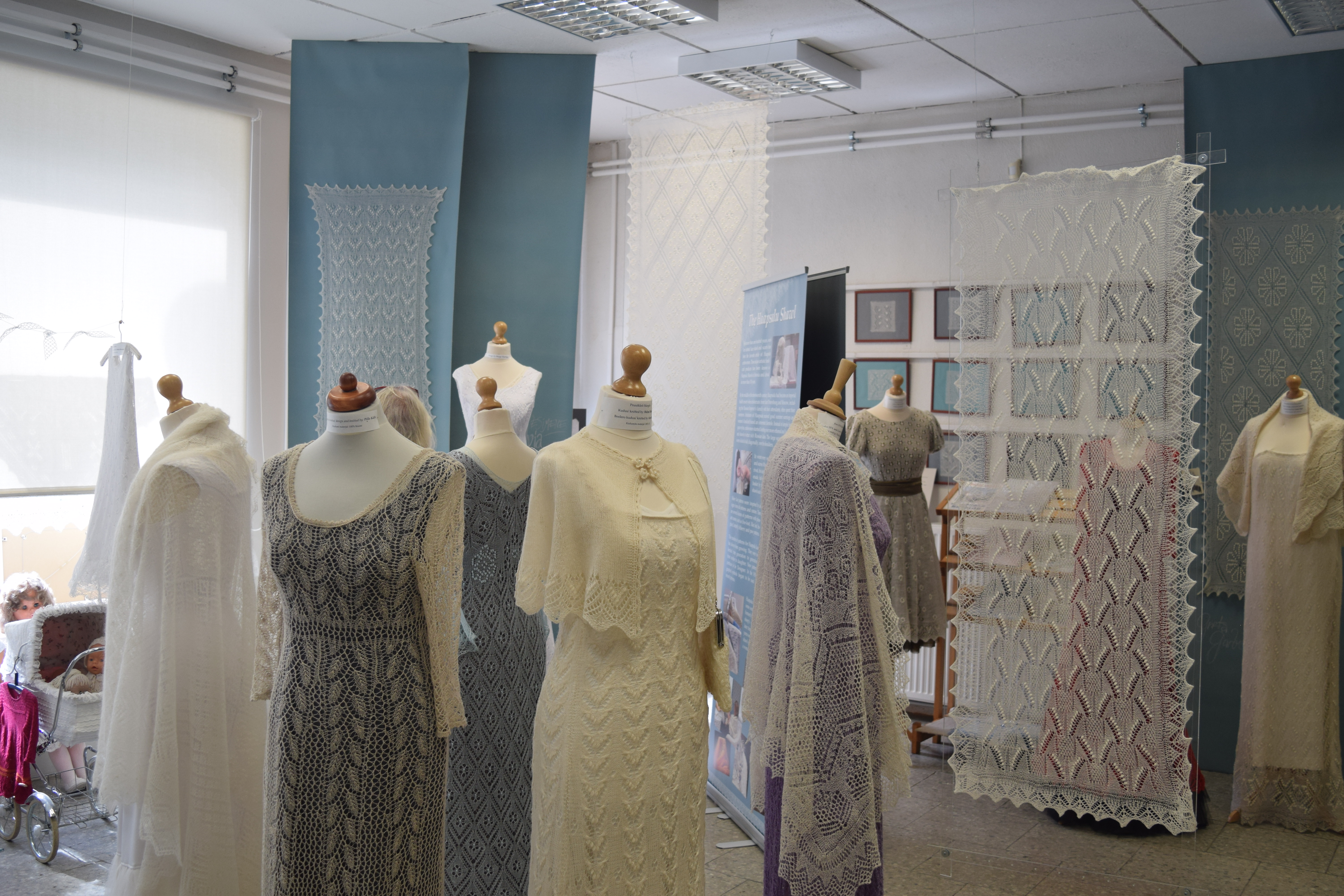Spun from the Sea [2021]
handmade jute netting, salt crystals, tea-stained cheesecloth, hand & machine embroidered Bulgarian wool, 100x100cmFinalist, 2021 Blacktown City Art Prize
‘Spun From the Sea’ pays homage to the craft of Haapsalu knitted shawls and is dedicated to Linda Elgas (b. 22 May, 1928), one of the five founding members of the Haapsalu Craft Guild in 1992 and an active member up until her passing in 11th March 2021. The book “Linda rätid. Square Haapsalu Shawls by Linda Elgas” was gifted to me by my relatives from Haapsalu in 2019 and I continue to reflect on that time spent in Estonia very dearly.

Created with both family and community in mind, the work embodies a lot of personal time into it, aided by the fact my grandmother and mum both assisted in its creation. The story behind the shawl is based on convergent histories of maritime trade and the knitted lace tradition across Scotland, Iceland, Orenburg and Estonia. During my research I found relationships between the properties of lace and water - Haapsalu mud and archeological lace found on the Gunnister Man; seaside shepherds in Saaremaa; Kihnu trois and Cornish ganseys worn by sailors; and folklore surrounding lace and mermaids/näkkid. This work is an ode to all of these relationships and connections that are held in the fibres of an object.
Situated along the coast of the Baltic sea, the picturesque resort seaside town of Haapsalu (also known as ‘the Nordic Venice’) in Western Estonia is home to its own unique style of pitsi kudumine [lace knitting] reminiscent to that of Shetland and Orenburg lace.
The history of these shawls dates back to the first half of the 19th Century, where the sall [shawl] and kolmnurkne rätt [three-cornered scarf] came as descendants of the nelinurkse räti [four-cornered square cloth]. Fine white wool has historically been used to knit Haapsalu lace, and whilst dependent on the pattern, gauge, yarn thickness and size of the shawl, generally shawls would weigh between 70-100 grams. The large square shawl, as predecessor of the rectangular and triangular shawl, usually measures to 100-150 cm or 200-260 stitches.
Six patterned pieces are stitched together, a tradition which likely started as knitters used short 20cm wooden needles that could only accommodate so many stitches per row. The triangular shawl stands out from the square and rectangle, where the triangular lace edging is worked in one piece and knitted first.
Estonian lace is identifiable by being knitted in stocking stitch and the pattern is worked on the right-side rows only; unlike Orenburg – garter stitch, worked right & wrong-side row, and Shetland – garter/stocking stitch, worked right & wrong-side rows.
Estonian lace also features its own set of stitches, including the characteristic nupp – a small ball of yarn not found on any other shawls used to add texture and create figures in openwork. As the women who knitted were paid by the gram for how much the item weighed, they added nuppid to add weight (and hence value) to an otherwise airy, open shawl which became increasingly fashionable in the latter half of the 19th Century. These could add a considerable amount to the price, as without nupps on a shawl weighing 84 grams, a plain shawl could weigh only 60 grams. The finest shawls were determined by their ability to be pulled through a wedding ring.
Haapsalu was well known by wealthy travellers from Germany, Sweden, Russia who came for the curative mud baths founded in 1825, particularly popular among the wealthy aristocracy of St. Petersburg and the court of the Russian tsars.
Between visits and moving from warm baths and brisk outdoor courtyards, visiting travellers would often wear shawls to stay warm. Inspired, the local Estonian artisans took to take advantage of the tourist trade and the women began a cottage industry of lace knitting. Inspired by the elegant fashions sported by cosmopolitan visitors as they strolled the town promenade, started to knit elegant lace shawls and sell them to tourists. Creating their own designs and style, patterns reflected everyday life often drawing from local flora and fauna.
In the early years patterns “spread from hand to hand, from mother to daughter, from neighbour to neighbour.” Stitch symbols were not used and often new shawls were knitted with existing shawls for reference. Unravelling was also used as a method for learning a stitch pattern. Over time, as trends faded and the insulating properties of shawls no longer became important to the wearer, knitters came up with increasingly sophisticated patterns to sell to bathers. Prolific knitters used thin samplers for stitch patterns, and were passed out between knitters to learn new patterns. Tales tell of how the borrower had to add another stitch pattern in return for the loan and often families held onto their own designs and patterns, passing down from mother to daughter only.
